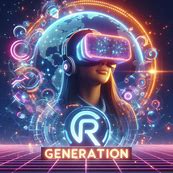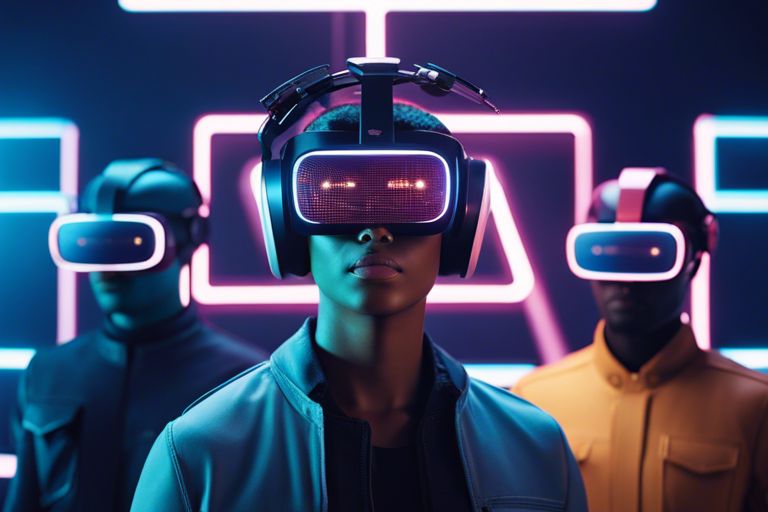Just as the metaverse continues to evolve and expand, so do the social dynamics within it. Understanding demographic cohorts in this virtual world is important for grasping the social potential that Generation VR brings. With different age groups, interests, and backgrounds converging in this digital realm, the metaverse holds the power to shape the future of social interactions and connectivity. Join us as we uncover the impact and opportunities that demographic cohorts in the metaverse present for Generation VR.

Demographic Cohorts In The Metaverse – Unearthing The Social Potential Of Generation VR
Generation VR: The New Pioneers
Some say that Generation VR, the first cohort of individuals who have grown up entirely in the immersive world of virtual reality, are the new pioneers of the digital age. Born into a world where virtual experiences are just as real as physical ones, these individuals are reshaping the way we perceive and interact with technology, society, and each other.
Who Are Generation VR?
For Generation VR, the boundaries between the physical and virtual worlds are blurred, if not entirely nonexistent. They are a generation that is hyperconnected, constantly plugged in, and deeply entrenched in the digital landscape. Growing up in a world where VR is the norm, they possess a level of comfort and fluency in navigating virtual environments that previous generations can only dream of.
As the first cohort to truly embrace the metaverse as a way of life, Generation VR is defined by their ability to seamlessly transition between the physical and virtual worlds. They are early adopters of new technologies, and their presence in the metaverse is shaping the way we work, socialize, and recreate in virtual spaces.
Behavioral Patterns and Preferences
One of the defining characteristics of Generation VR is their preference for digital interaction over face-to-face communication. They value the anonymity and freedom that virtual reality provides, allowing them to express themselves in ways that may not be possible in the physical world.
To understand Generation VR’s behavioral patterns and preferences is to unlock the key to the future of social interaction in the metaverse. Their inclination towards virtual relationships and communities has the potential to revolutionize the way we connect, collaborate, and create in the digital realm.
To investigate deeper into the behavioral patterns and preferences of Generation VR is to uncover a world where virtual experiences hold as much, if not more, significance as real-life interactions. Understanding their unique perspective is crucial in harnessing the social potential of the metaverse.
The Social Fabric of the Metaverse
The metaverse represents a new frontier where individuals from different walks of life converge in a digital realm defined by limitless possibilities and boundless imagination. As this interconnected virtual space continues to evolve, it is necessary to research into the social dynamics that shape interactions, relationships, and identities within its expansive landscapes.
Interaction and Community Building
Community lies at the heart of the metaverse, serving as the foundation upon which social interactions and relationships are built. From virtual gatherings and collaborative projects to shared experiences and collective endeavors, the metaverse fosters a sense of belonging and camaraderie among its diverse denizens. Through real-time communication, interactive environments, and immersive technologies, individuals can forge connections, nurture friendships, and establish communities that transcend geographical boundaries and physical limitations.
Community building in the metaverse is not just about bringing people together; it is about creating spaces where individuals can express themselves, share their passions, and contribute to something greater than themselves. Whether through virtual events, online forums, or multiplayer games, the metaverse offers a slew of opportunities for collaboration, creativity, and cultural exchange, paving the way for new forms of social engagement and interaction.
Virtual Identity and Expression
Metaverse inhabitants have the freedom to craft their virtual identities and express themselves in ways that may not be feasible or socially acceptable in the physical world. From customizable avatars and personalized profiles to interactive storytelling and creative pursuits, individuals can explore different facets of their personality, experiment with diverse roles, and redefine their sense of self within the virtual realm.
It is crucial to recognize that while the metaverse offers a space for self-expression and experimentation, it also raises concerns about privacy, security, and authenticity. As users navigate this digital landscape, they must navigate the complexities of virtual personae and online interactions, mindful of the potential risks and implications of their actions in shaping their virtual identities. Ensuring a safe and inclusive environment for diverse forms of expression while safeguarding individual rights and boundaries remains a pressing issue in the ongoing evolution of the metaverse.
Opportunities and Challenges within Generation VR
Once again, as Generation VR continues to grow and evolve, it presents a myriad of opportunities and challenges that need to be carefully navigated in order to harness its full potential.
Economic Potential and Employment
Within Generation VR, there lies a vast economic potential waiting to be unlocked. Virtual reality opens up new avenues for businesses to reach consumers in innovative ways, creating virtual marketplaces and expanding the possibilities for e-commerce. This shift towards virtual interactions also creates new job opportunities in fields such as virtual event planning, digital marketing, and virtual experience design.
Mental Health and Ethical Considerations
The mental health impact of immersing oneself in a virtual world raises ethical considerations that cannot be ignored. While VR can offer a safe space for individuals to explore their identities and engage in social interactions, there is a risk of addiction and detachment from reality. It is crucial for developers and users alike to prioritize responsible usage and establish healthy boundaries.
Economic potential and employment opportunities within Generation VR are vast, but must be balanced with ethical considerations and a focus on mental health to ensure a sustainable and positive virtual environment for all users.
Preparing for a Cross-Generational Metaverse
Bridging the Digital Divide
Cross-generational interaction in the metaverse presents a unique opportunity to bridge the digital gap that often exists between different age groups. As we move towards a more interconnected virtual world, it is crucial to consider the various levels of digital literacy and experience that each generation brings to the table. To create a truly inclusive metaverse, efforts must be made to ensure that individuals of all ages can navigate and participate in this evolving digital landscape.
One way to bridge this gap is by providing educational resources and support for older generations who may be less familiar with virtual environments. By offering training programs and tutorials tailored to different age groups, we can empower individuals to explore and engage with the metaverse confidently. Additionally, facilitating intergenerational collaborations and mentorship programs can foster a sense of community and mutual learning within the metaverse.
Policy-making for an Inclusive Virtual World
Divide policies that promote inclusivity and accessibility are crucial for creating a metaverse that caters to individuals of all ages and backgrounds. Regulatory frameworks must be put in place to address issues such as data privacy, online safety, and digital rights to ensure that everyone can participate in the metaverse securely and ethically. By establishing guidelines that prioritize diversity and equality, policymakers can help shape a virtual world that is welcoming and accommodating to all users.
Any policy decisions made regarding the metaverse must consider the needs and concerns of diverse demographic cohorts. An inclusive approach to policy-making will not only promote a more equitable virtual environment but also foster a sense of trust and confidence among users. As we prepare for a cross-generational metaverse, it is crucial to prioritize the development of policies that uphold the values of accessibility, fairness, and respect for all individuals.

Summing up
Drawing together the insights from this exploration of demographic cohorts in the metaverse, it is clear that Generation VR holds immense social potential. By understanding the unique characteristics and preferences of each cohort within this generation, we can better harness the power of virtual reality to create meaningful connections, foster inclusivity, and drive positive social change. As the metaverse continues to evolve, it is necessary to prioritize the needs and values of Generation VR to build a truly immersive and engaging digital world that benefits all participants.





